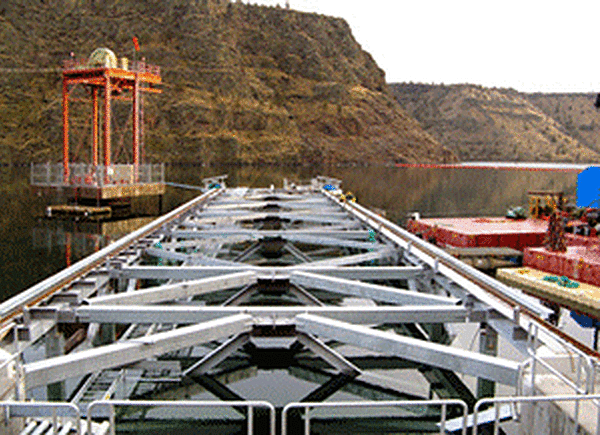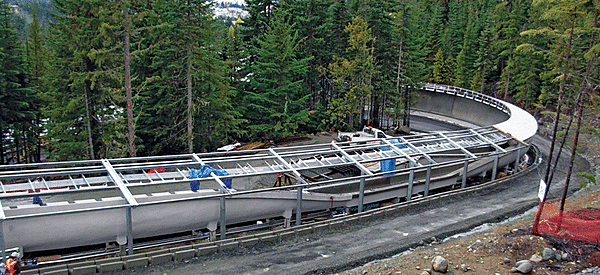In the Atmosphere
The most common exposure environment for hot-dip galvanized (HDG) steel is atmospheric or in the open air. In atmospheric applications, hot-dip galvanized steel naturally exposed to wet and dry cycles which are crucial to the development of a series of films on the coating surface known as the zinc patina. The patina is stable and non-reactive unless exposed to aggressive chlorides or sulfides and crucial to the longevity of HDG steel.
The performance of atmospherically exposed hot-dip galvanized steel depends on five main factors:
- Temperature
- Humidity
- Rainfall
- Sulfur dioxide (pollution) concentration in the air
- Air salinity
None of these factors can be singled out as the main contributor to zinc corrosion, but they all play a role in determining the corrosion protection hot-dip galvanized (zinc) coatings can provide in certain atmospheric conditions.

For nearly a century, ASTM Committee A05 (Metallic Coated Iron and Steel Products), G01 (Corrosion of Metals), and others have been collecting records of zinc coating behavior under various atmospheric conditions. The independent and industry testing of samples in five environments (industrial, rural, suburban, tropical marine, and temperate marine) have yielded real-world performance data for hot-dip galvanized steel. These atmospheric exposure tests are conducted throughout North America to obtain corrosion rate data for zinc. Although there is a range in observed corrosion rates, actual observed rates rarely exceed 0.3 mils per year. Furthermore, when exposed indoors, the life of the galvanized coating will be significantly longer than outdoor exposure.
It is important to note the data represented on this site about galvanized steel's performance is based on actual performance in the field, and not on accelerated testing methods. Manufacturers of many other corrosion protection systems use these tests to claim their products perform as well as hot-dip galvanized steel based on accelerated testing, namely salt spray tests. However, salt spray tests do not allow the zinc coating to go through the natural wet and dry cycles required to form the zinc patina; and thus, are not an accurate predictor of HDG's longevity in the real world.
Using this real-world corrosion data, statistical methods, and neural network technology, Dr. Gregory Zhang of Teck Metals Ltd. developed the Zinc Coating Life Predictor (ZCLP) to estimate the life of hot-dip galvanized coatings in atmospheric conditions. Using the ZCLP, you can input specific parameters for any environment and get an estimated time to first maintenance (TFM) for the galvanized coating.
For corrosion classification purposes, atmospheres are generally divided into five groups:

- Industrial environments are generally the most aggressive in terms of corrosion. Air emissions may contain some sulfides and phosphates that cause coating consumption. Automobile, truck and plant exhaust are examples of these emissions. Most city or urban areas are classified as moderately industrial.
- Tropical Marine environments are found in climate regions where the temperature rarely, if ever, falls below the freezing point of water. The high humidity in combination with the chlorides in the air from the nearby water makes these climates almost as corrosive as industrial environments. The warmer temperatures of the tropical marine atmosphere raise the activity level of the corrosion elements on the surface of the zinc coating. Other factors that affect marine corrosion rates are wind speed and direction as well as proximity to the coast.
- Temperate Marine environments are less corrosive than tropical marine environments due to the lower temperature and humidity levels in the temperate region. However, in any marine air, chlorides from sea spray can react with the normally protective corrosion products to form soluble zinc chlorides. When these chlorides are washed away, fresh zinc is exposed to corrosion. Chlorides, wind speed, wind direction, and distance from the sea also affect the corrosion rate of zinc coatings in temperate marine atmospheres.

- Suburban atmospheres are generally less corrosive than moderately industrial areas. As the term suggests, they are found in the largely residential perimeter communities of urban or city areas with little or no heavy industry.
- Rural atmospheres are the least aggressive of the five types. This is due to the relatively low level of sulfur and other emissions found in such environments.
